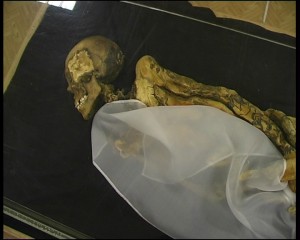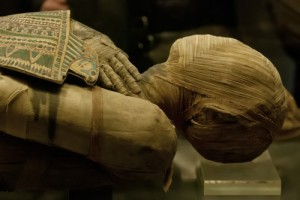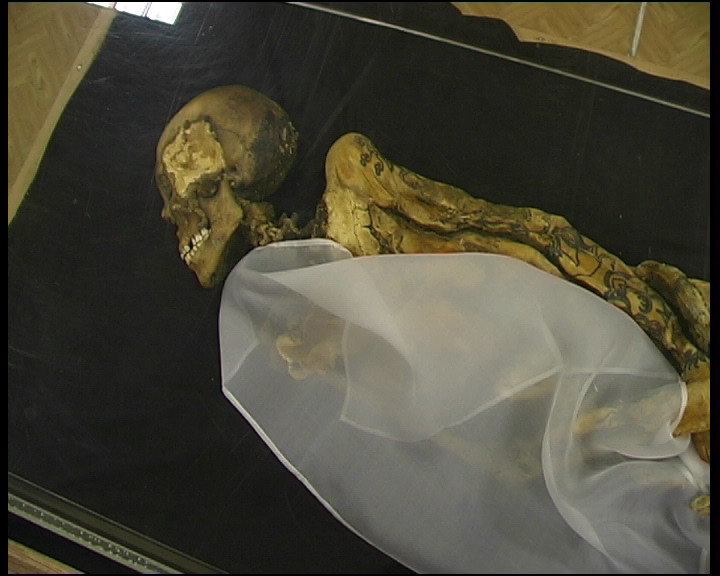
A 2,500-year-old mummified princess from the Pazyryk people, a nomadic tribe from the region of the Siberia, may have died from breast cancer, a disease that strikes millions of women, according to a scientific analysis using new MRI scans.
In addition, scientists also suspect that the woman, who died at the age of 25, may have consumed cannabis to relieve her pain. It was already known that the Princess Ukok had died at a young age, but until now the reasons remained unknown.
Using MRI scanners, the research team identified asymmetrical signals in the mummy of the princess who lived during the 5th Century BC, which made them suspect about the disease. “During the imaging of mammary glands, we paid attention to their asymmetric structure and the varying asymmetry of the MRI signal. We are dealing with a primary tumor in the right breast and right axial lymph nodes with metastases,” explained Andrey Letyagin, from the Institute of Physiology and Fundamental Medicine, on an interview to The Siberian Times.
Letyagin worked in collaboration with Andrew Savelov from the International Tomography Center, and the findings of the research were recently published at the Science First Hand journal. Princess Ukok’s mummified remains were found, in a permafrost subterranean tomb, in the Altai Mountains, which is located near the borders of Kazakhstan, China and Mongolia, in 1993.
It is still thought to be one of the most important archaeological discoveries of the 20th century, made by Russian archaeologists. Ever since, scientists have been dedicated to understand the causes of death with exams, including facial reconstruction, DNA tests and MRI scans, conducted at the research facility in Novosibirsk.
The woman was thought to be about 20 years old when she developed breast cancer, which ended up causing her death about five years later. “The three first thoracic vertebrae showed a statistically significant decrease in MR signal and distortion of the contours, which may indicate the metastatic cancer process,” Letyagin said. “I am quite sure of the diagnosis – she had cancer.”
“She was extremely emaciated. Given her rather high rank in society and the information scientists obtained studying mummies of elite Pazyryks, I do not have any other explanation of her state. Only cancer could have such an impact. It is clearly seen the tumor in her right breast, visible is the metastatic lesion of the lymph node and spine…She had cancer and it was killing her,” he added.
The exams conducted by the researchers also revealed traumas in the woman’s bones, consistent with dislocations of joints and fractures to the skull, which suggested that she could have fallen from a high place. Therefore, Letyagin explained that it was not possible to be absolutely certain if the cause of death was cancer. In addition, the princess also suffered from osteomyelitis, a bone or bone marrow infection that develops in children and adolescents, as demonstrated by the researchers.
Cancer has already been proven to exist at least since ancient Egypt, and currently scientists are performing MRIs to understand the disease in ancient times. Another question that has raised attention from researchers is the ways of fighting the pain due to the disease. In the case of Princess Ukok, the archaeologists believe that cannabis and analgesics were plausible options.
[adrotate group=”3″]
“In ancient cultures, from which there is a written testimony, such analgesics used were wine, hashish, opium, henbane, and extract of mandrake, aconite and Indian hemp. The Pazyryks knew hemp and its features,” said Natalia Polosmak, the archaeologist responsible for the discovery of the remains in 1993, in which the chamber contained cannabis. “Probably for this sick woman, sniffing cannabis was a forced necessity. And she was often in an altered state of mind. We can suggest that through her the ancestral spirits and gods could speak.”
Even tough she is now commonly called princess, the archaeologists believe that she was in fact a shaman, since her mummified body was found in a tomb similar to the ones uses for royalty, a tumuli or Kurgan. The researchers are working surrounded by controversy, as some Altay elders oppose to the research, since they believe it has disturbed the woman’s tomb and spirit, causing possible catastrophes.

